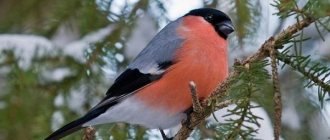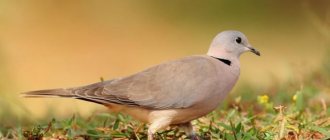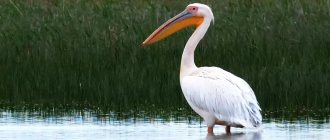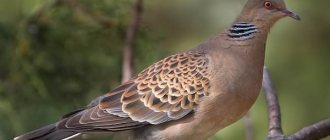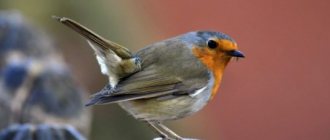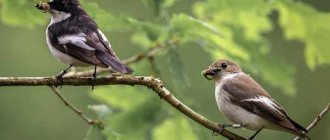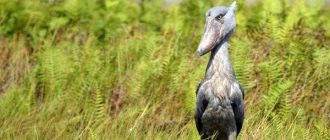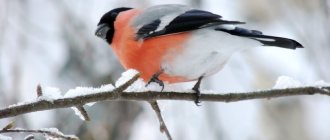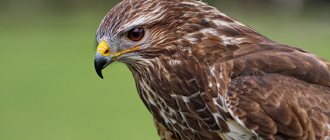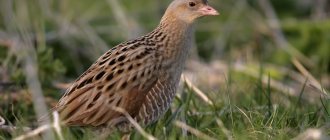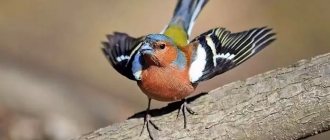- Wild animals
- >>
- Birds
When talking about European birds with unusual sounds, one cannot fail to mention the fieldfare thrush. Until recently, such a representative was extremely difficult to meet in the city. Today, thanks to the rapid spread of rowan trees, it is quite easy to meet a thrush who loves their berries. You will immediately understand that this is a fieldfare . Perhaps this is due to its original appearance and unusual trill.
Origin of the species and description
Photo: Fieldfare
Fieldfare belongs to the animal kingdom, the phylum Chordata, the class of birds and the order Passeriformes. This group includes more than 5 thousand representatives and is considered one of the largest in composition. Individuals included in this order are distributed throughout the world. They mainly live in warm and hot latitudes. They prefer forest life to city life. And some representatives can even spend all the allotted years on the tree. The family that includes the fieldfare is called the “Thrush” (Turdidae).
Its representatives are characterized by the following features:
- small (small and medium) sizes – 10-30 cm;
- straight (but slightly curved at the top) beak;
- wide rounded wings;
- straight tail;
- Habitat: thickets, bushes, forests.
The color of thrushes can be either modestly light or brightly contrasting. All birds of this subgroup feed on berries and insects. They can live alone or in pairs, or in flocks. Fieldfare birds prefer the latter method of transportation. Moving in flocks, they emit loud, short squeals. They give themselves away by making loud noises (“Trr...”, “Tshchek”) even during the nesting period.
Video: Fieldfare Thrush
Compared to other members of the thrush class, fieldfares are less fearful and less secretive. It is much easier to meet them up close (especially during the rowan flowering period). Their song is clearer, but much quieter. Walking past a bush of red berries and hearing a strange crackling sound ending in a perky “...weak”, you can be sure that somewhere in the jungle of branches there is a fieldfare, feasting on its favorite drug.
Now you know what chicks of the fieldfare thrush look like. Let's see where this interesting bird lives and what it eats.
The predator won't pass
Fieldfare have a fighting character. Blackbirds easily drive away predators by attacking the entire flock. They can even attack a person, flying low over his head and spraying him with droppings.
The crow, which loves to settle in with its neighbors, annoys the fieldfare. Even a single male bravely attacks a predator that has entered a settlement and forces it to retreat.
Blackbirds live in peace and friendship with their feathered neighbors. Where these noisy and brave birds nest, a predator will not dare to destroy the nests and steal the chicks. They will be able to scare away the squirrel, which strives to get to the nests of small passerine birds.
Crows and magpies also prefer not to mess with these noisy birds. Thus, the safety island created by fieldfare attracts small birds such as chaffinch, warbler, greenfinch and many others.
Fieldfares protect their chicks well, which allows them to breed once a summer, while other blackbirds do this twice.
However, selfless protection of nesting sites does not always save colonies. Sometimes people, by their own presence, prevent fieldfares from repelling the attacks of crows. Woodpeckers, jays, birds of prey and squirrels also harm blackbirds. Cold, rainy days can cause colony death.
Fortunately, the gregarious existence and mobility of fieldfares is the key to expanding their habitats. They actively explore areas suitable for nesting, making long flights.
Appearance and features
Photo: Bird Thrush Fieldfare
Even those who are poorly versed in bird trills will easily be able to distinguish the fieldfare from other representatives of the thrush class. This happens due to the unique colorful appearance of the individual.
The external characteristics of migratory animals can be presented as follows:
- color – multi-color. The birds' heads are usually grayish. The tail is so dark that it appears black. The back is colored brown. The belly (like many other thrushes) differs from the background of the general color - it is white. There is a dark yellow apron in small spots on the brisket. The wing lining (noticeable when the bird is flying) is white;
- Dimensions – average. Fieldfares are significantly inferior in size to jackdaws, but at the same time superior to starlings. In terms of size characteristics, they are almost identical to the blackbird. Maximum weight – 140 g (male) and 105 g (female). The body length of adult individuals barely reaches 28 cm. The wingspan is quite wide - about 45 cm;
- the beak is sharp. Compared to other birds, the fieldfare stands out from its bright yellow, sharp beak. Its top is dark. The length of the beak ranges from 1.5 to 3 cm. This length is quite enough to absorb small insects and eat the fruits of the rowan tree.
Interesting fact: The color of males and females is practically the same. The only distinctive characteristic is the dimensions of the representatives of fieldfare.
With seasonal climate changes, the appearance of fieldfares remains virtually unchanged. Only the color of the beak changes (from bright yellow to ocher), and the reddish apron located on the chest of the individual also increases.
Caring for offspring
Feeding chicks has its own characteristics. The female continuously warms her chicks for the first 6 days, especially during rain. The male brings food during this period. Then both parents work almost equally. At the very end, as at the beginning of the feeding stage, the male is more active in searching for food.
After about two weeks, the chicks jump out of the nest, not yet fully mastering flight skills. They often end up on the ground, where they become prey for predators. In cold, damp weather, chicks risk dying. In addition to the parents, other thrushes can also feed the chicks that find themselves on the ground. Therefore, under no circumstances should you take home chicks that have fallen from the nest and thereby deprive them of their chance of survival.
In the middle latitudes of Russia, a mass emergence of young blackbirds was recorded from the last ten days of May to the first ten days of June. The chicks, having safely left the nests, sit out this turbulent time on tree branches and in dense thickets of bushes. They will be capable of a short flight only after a week. The majority of parents, after the chicks have fledged, wander along with the young in search of berry places. A very small number of birds hatch their chicks a second time.
Where does the fieldfare thrush live?
Photo: Fieldfare in Russia
Today you can meet fieldfares throughout northern Eurasia (from Cape Roka to Cape Dezhnev). Birds lead both sedentary and nomadic lifestyles.
In winter, most individuals prefer to spend time in the following countries:
- North Africa is a part of Africa, which includes countries such as Egypt, Sudan, Libya, etc. This region attracts birds with its Mediterranean natural zone. Most of the territory is occupied by the Sahara.
- Europe (Central and Southern) is a region that includes Mediterranean countries, as well as states that are not part of the CIS. The territory is characterized by a calm climate, fertile soil and an abundance of plants (which is extremely necessary for the normal life of field thrushes).
- Asia is an island part (mainly Türkiye). The climatic conditions of the area are mountainous and have features of a continental climate. In the Aegean and Mediterranean Seas, winter is quite mild and calm.
Birds also live in the CIS countries. Moreover, with a sufficient number of rowan bushes, they may not fly away to winter in foreign territories at all. Fieldfare like to settle in overgrown steppes, forests and their edges. The main requirement for a place of residence is the proximity of wet meadows. You won't be able to meet these birds in a deep forest. Nesting for blackbirds takes several months (from April to July).
Interesting fact: Fieldfare build nests mainly on pines, alders, and oaks at the fork of a trunk. All components that come under the beak (moss, twigs) act as building materials. The binding agent is clay, silt, and wet soil. The result of the work is a massive cup-shaped structure with a fairly deep bottom.
Getting to the fieldfare nest is not so easy. Birds build their home at considerable heights. The maximum level of construction of the structure is 6 m.
Habitat
Fieldfare nests throughout almost all of Eurasia and Siberia. There are no nesting sites in Southern Europe, Spain, almost all of France, and England. On the territory of our country, fieldfare can nest everywhere in the European part, even in the tundra. When there is a good year for wild berries in central Europe, the thrush stays there for the winter.
In fertile years it is found in the northern regions of Russia, but by mid-winter, when food becomes scarce, it still flies to the south. Most often winters in Southern and Central Europe and Asia Minor.
It chooses the edges of coniferous or deciduous forests, settles in the city - in squares and parks, and is often found in garden plots. Previously, this thrush could rarely be seen in the city, but now it increasingly visits its favorite rowan bushes, which grow in abundance near people.
With the arrival of golden autumn, blackbirds began to arrive in large flocks and began to settle closer to cities. At first they were seen on the outskirts, but now these birds are also found in residential areas. The abundance of berries helps them survive the harsh winter cold.
In the wild forest, it settles in completely different places - near clearings, on the edge of the forest next to arable lands and floodplains, in groves among meadows and pastures. It is good to set up nesting sites in high forests next to meadows and arable lands because in short grass or grassy swamps it is easier to find damp soil for building a nest, as well as food.
What does the fieldfare thrush eat?
Photo: Gray Thrush Fieldfare
Based on the name of the thrush, we can conclude that its favorite food is rowan berries. This conclusion is absolutely correct. It is these fruits that the fieldfare feeds on in the summer.
During the remaining several months, his diet includes:
- snails (gastropods with an external shell);
- earthworms (a universal food that can be found anywhere on the planet);
- insects (both small beetles, cockroaches and flying representatives of the class, and their larvae).
The favorite delicacy of fieldfare is berries. And we are talking not only about rowan fruits. Birds have a special craving for sweets, which is why they are forced to go in search of tasty berries already in the early days of summer. Between a rowan tree and a bush with sweet fruits, the fieldfare will definitely choose the second option. Thrushes are content with rowan berries only in cases where there are no other fruits. The tart and slightly bitter taste of these berries interrupts the craving for sugar.
Interesting fact: Field thrushes have a good memory. Having once enjoyed the sweet fruits of a tree, birds instantly remember its location. Even if the clearing is overgrown with other fruitful bushes, the fieldfare, first of all, will pluck the plant whose taste characteristics it has already tested.
Fieldfares feed on snails and worms due to the basic lack of fresh fruits. In this case, the absorption of earthworms often ends in death for birds. This is due to the fact that underground creatures are infected with nematodes, large numbers of which the thrush’s body cannot tolerate.
Due to the fact that recently rowan bushes have become increasingly common in the CIS countries, it has become much easier to spot thrush nests on them (even in winter). Birds remain to winter directly on fruitful trees.
Mineral feed
In nature, birds obtain all the necessary vitamin and mineral components as a result of consuming various additives. Thus, blackbirds need river sand, due to which their bodies grind roughage, consisting of various grains, greens and branches.
Providing birds with such feeding allows them not to disrupt their proper metabolism, even when kept at home. For example, carrots, which contain a large amount of carotene, must be present in the chick’s daily diet, making up about 30% of the food you prepare.
Features of character and lifestyle
Photo: Fieldfare in Moscow
The way of life of the fieldfare depends on the climatic conditions of the area where it lives and the fertility of its soil.
Birds can lead the following types of life activities:
- sedentary - living in one territorial area year-round, only the location of nests can change (this is due to the presence of more fertile trees);
- nomadic - flying to warmer countries in the winter and returning to their homeland only with the onset of spring.
A study of fieldfare showed that those birds that had to leave their native land due to the onset of cold weather returned from “abroad” to their homeland quite soon - in mid-April. Blackbirds move mainly in flocks. One group contains up to 100 birds. At the same time, immediately after arriving on their native land, fieldfare stick together. At first, they prefer to “sit out” on the outskirts of forests, in the suburbs. It is here that birds wait for the snow to melt and the opportunity to search for food.
After the snow has melted, the flock of arriving fieldfares is divided into so-called colonies. Each new group has its own leader. The resulting family begins to search for a nesting site and food itself. One colony has about 20 bird pairs. By their nature, fieldfare thrushes are quite lively and bold. Unlike their class brethren, they are not afraid to confront larger enemies. The main share of the protection of the collective rests with the wings of the leaders of the colonies.
The weapons of fieldfare are stones and droppings. During a battle with the enemy, they rise to a great height and drop a stone on the enemy. A hit will result in serious damage to the bird. After throwing, the fieldfare “rewards” its victim with droppings. This is necessary for weighting and gluing the wings (which makes clear design impossible).
Interesting fact: A person passing under the “battlefield” can also become a victim of fieldfare. Of course, you will be able to come out of the battle alive. But it’s unlikely to be clean.
Social structure and reproduction
Photo: Female fieldfare thrush
Classification of fieldfares by gender implies the division of all birds into males and females. The only distinguishing characteristics between them are the dimensions. Since colonies return to their homeland quite early, females are ready to hatch new offspring at the end of April.
Before actual reproduction, the female part of the thrush colony begins active construction. It is the females who create the living conditions for future offspring - the nest. Externally, the building looks massive. It is deep and quite durable. The inside of the “house” is covered with a special soft covering.
Fieldfare mating occurs in early May. At one time, the female can plant up to 7 greenish eggs. It is their mother who protects them for about 15-20 days.
Interesting fact: While the female is incubating the eggs, the male does not provide her with food. Fieldfare mothers have to search for food and replenish supplies on their own. The father protects his nest from predators and protects other members of the colony.
The chicks hatch by mid-May. For about half a month, little fieldfare are under the sensitive supervision of their mother. Both the female and the male provide food to the cubs. During one day of light, parents bring food to the nest about 100-150 times. The cubs feed approximately 13 times per hour.
The first broods eat mainly insects and worms. The latter enter the berry season and are content with blueberries, rowan berries, strawberries and other fruits. At the end of May, the chicks fly out of the nest. Parental training (flights, meals) takes place for some time. After which the birds go on a “free swim”. The female is ready for the second clutch in June. The number of cubs decreases with each litter.
Construction of colonies
Having overwintered, fieldfares arrive in their usual nesting areas in the first ten days of April. The flocks are huge, up to a hundred or more birds. In city parks, flocks of thrushes consisting of 200-300 individuals form.
While waiting for the snow cover to melt, flocks of field thrushes find refuge in the floodplains of rivers and on forest edges. The next few days are devoted to the construction of the colony, the location for which is chosen meticulously and thoroughly. Experienced “old men”, the founders of the colony, form the core. Juveniles arrive at the site a few days later and occupy the outskirts. Old birds choose suitable trees for their nests, assess the safety and potential feeding capabilities of the colony core, as well as the entire settlement.
Free image/jpeg, Resolution: 3376×3376, File size: 2.11Mb, Fieldfare or Turdus pilaris
Fieldfare colonies often number more than two dozen pairs. In a small park in the Voronezh region, eleven families of thrushes made nests on one large poplar tree, and they coexisted peacefully, avoiding noisy fights. What a bird hostel!
The nest for future chicks is built by the female, collecting dry tufts of grass, twigs, plant roots and wet soil around her. Closer to June, the female lays about 4-7 dark green eggs and incubates them for 13-15 days. The male's task is to guard the female and the nest. He does not take over feeding the female; she obtains food on her own. Chicks are usually fed by both parents, a process that takes almost 2 weeks.
Natural enemies of fieldfare thrushes
Photo: Fieldfare in nature
In their natural habitat, fieldfares have a huge number of enemies. Many predators want to feast on a small, lively bird.
Among the worst rivals of blackbirds are the following individuals:
- crows. The most massive representatives of the passerine class do not miss the opportunity to feast on the unhatched or very weak offspring of thrushes. For these purposes, crows even settle close to their victims. Having waited for the right moment, they attack the nest of fieldfares and devastate it. But this outcome of events is not typical for all cases. Most attacks end in the complete defeat of the crows. Fieldfare are quite brave and strong birds. They can cope with a large feathered enemy even alone;
- proteins. Such enemies are especially dangerous for fieldfares, which have established their nest in tall trees. Climbing along the branches, the squirrel quickly penetrates the nest, absorbing everything that is in it. It is noteworthy that if the male sees a squirrel approaching, he will be able to drive it away (with strong wing flapping and pecking).
Other predators also hunt fieldfares: falcons, hawks, woodpeckers, owls and jays. Any animal or bird that can reach the fieldfare nest, located at a high altitude, can act as a hunter.
Interesting fact: Fieldfare are so brave that they are ready to defend the colony from enemies several times larger than the birds. Moreover, blackbirds often come to the aid of their feathered counterparts.
But even such fearless birds are not always able to protect their flock. Massive attacks can cause the complete extermination of a fieldfare colony. Sharply deteriorating weather can contribute to this. There are also known cases where a crow that lit up a nest went unpunished because a person interfered with the battle. Blackbirds are still afraid of people.
Despite its belligerence, the fieldfare is not capable of causing pain to other birds without threatening its own life. Birds often come to the defense of smaller individuals, protecting them from predators. Often, crows that hear the bizarre cries of a fieldfare in a chaffinch’s nest prefer to turn around and fly away in the other direction, leaving the plan of attack for the next case.
Vitamins
In addition, you should constantly add crushed eggshells to their daily diet, after boiling them, crushed chalk, shell rock and charcoal, which provide additional strength to the bones. Special attention should be paid to a variety of berries, which should be prepared for poultry for the winter, drying them in bright, well-ventilated areas.
As a stable source of microelements, multivitamin tablets or honey can be added several times a week to the water that the chick drinks, which indirectly helps strengthen the immune system. However, keep in mind that if you purchase ready-made vitamin preparations at a veterinary pharmacy, you should strictly adhere to the instructions, because an excess of vitamins can cause the same harm to the thrush as their deficiency.
